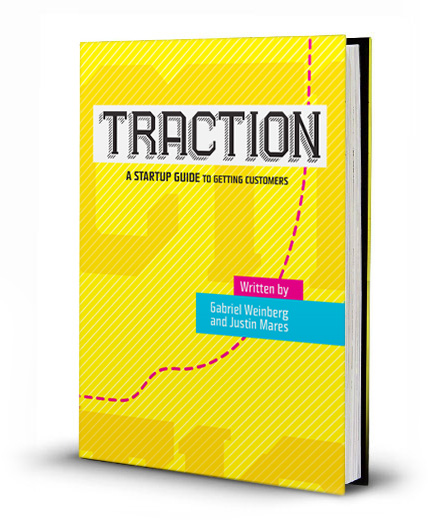 My interview with Gabriel Weinberg was originally published Sep-8-2010. He was doing research for what became his fantastic book Traction. We talked for the better part of an hour and a half and I can remember he kept returning in different ways to what was needed to close your first dozen enterprise customers.
My interview with Gabriel Weinberg was originally published Sep-8-2010. He was doing research for what became his fantastic book Traction. We talked for the better part of an hour and a half and I can remember he kept returning in different ways to what was needed to close your first dozen enterprise customers.
This is an excerpt that covers how many interviews does it take to find a first B2B customer and why it’s a good idea to explore several potential niches in parallel. You can see the full interview at “Your First Dozen Enterprise Customers.“
How Many Warm Leads Are Needed to Find a Pilot Project?
Weinberg: What about the numbers as you start building a sales funnel? How many warm leads does one need to hit before finding one that will do a pilot project?
Murphy: As a rough rule of thumb maybe twenty or thirty. If you’ve got a theory of who should find value in the application, and you talk to twenty people or thirty people, and no one wants to do anything else, than you’ve got to change your theory of who is going to get the value, or you’ve got to change something about what you are doing.
And, you are obviously making adjustments after every conversation or two based on what they are telling you, adjusting for what’s not working and what you’ve left out. Our model for a lot of the sales materials and the marketing materials we help people develop is that we are spinning that after every conversation or two. We don’t tend to invest a lot in the beginning in glossy brochures and expensive collateral because it’s going to change very rapidly if you act on what you are learning.
You Can Explore Several Niches In Parallel
Weinberg: Suppose you don’t know the vertical. Do you set up a system where you have a few leads in a few verticals and then iterate from those conversations?
Murphy: Yes, we can sometimes fire a spread: we might try two or three different things. For that approach we will develop what we call 3×5 cards. It’s a tiny brochure that fits on two sides of a 3×5 card. It’s got a pain question on one side with two to three bullets that substantiate or talk about your ability to address that problem. The other side has your 15 second elevator pitch.
We’ll do one of these for each of the different segments we are thinking about, or even in a segment there might be two or three different pain points that we are trying to explore this way. At networking events or in other kinds of conversations, when somebody asks what you are doing, we’ll hand them one of those, and then talk about it. The form factor, which is not much bigger than a business card, is comfortable to hand out even in a standup networking session, or in a technical conference setting.
It doesn’t feel awkward the way even a half sheet or full sheet of paper would. And they’ll typically put it in their pocket or their purse and keep it.
When you’ve actually got permission and you’ve got a meeting with a person, you are going to have coffee with them or a meal, then we’ll do a one pager–an 8.5 x 11 piece of paper–that both guys can draw on.
But, in the very beginning when you are still in discovery mode, trying to figure out what the pain question is, we’ll often use 3×5 cards. At a conference or event you may talk to many people for a few minutes, and leave them with a 3×5 card: it makes a nice summary of your message and has contact information so that either the person you talked to may call you or they may pass it along to somebody in their firm who may call you back.
The other thing is a lot of the folks we work with are fairly introverted–a lot of successful engineers didn’t go in engineering because they wanted to stand up in a room full of people and give a speech. The 3×5 card does a couple of things. It crystallizes the key points they need to make and communicates them succinctly. It helps get the conversation started, and we focus mainly on coaching founders to ask a couple of questions and try and learn more about the prospect’s perspective.
Sometimes their temptation is to start talking about all the things their product does as if the listener has an hour. Unfortunately you really only have about ninety seconds to three minutes: if you haven’t said something which has triggered some interest, you’ve really got to politely let the conversation end.
Related Blog Posts
- Founders Want Leads and Deals
- Focus on Frequency and Severity
- Q: What Makes a Product Attract Early Adopters?
- Markers That A Startup Can Use to Identify Early Adopters?
- Why is it so hard to get your first ten customers?
- Why is an Enterprise Sale So Complex?
- Address Technology, Management, and Executive Concerns To Close Enterprise Deals
- Early Revenue For Enterprise Web Apps (Video)
- Customer Development and Channel Development
- Q: How To Speed Up Early Trials, Adoption, and Sales
- Chalk Talk on Technology Adoption
- DreamSimplicity Interview Transcript
